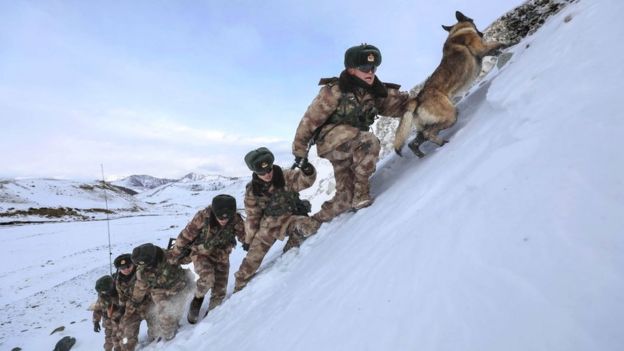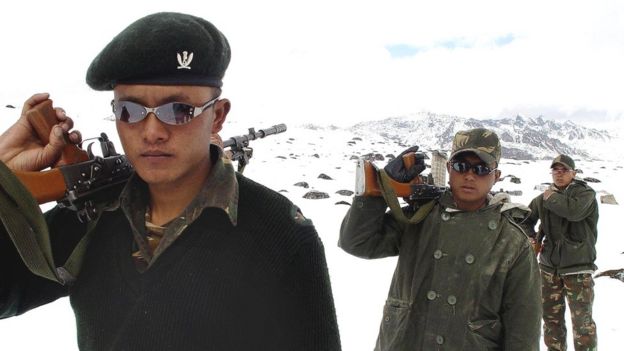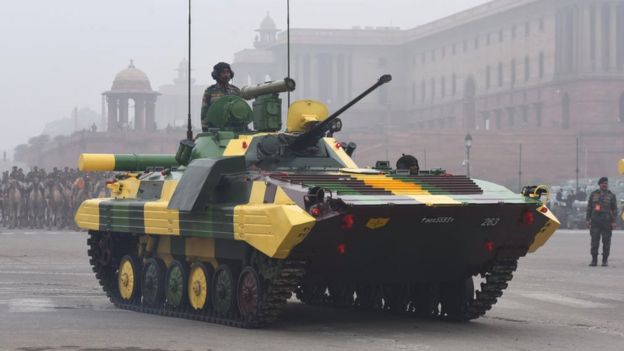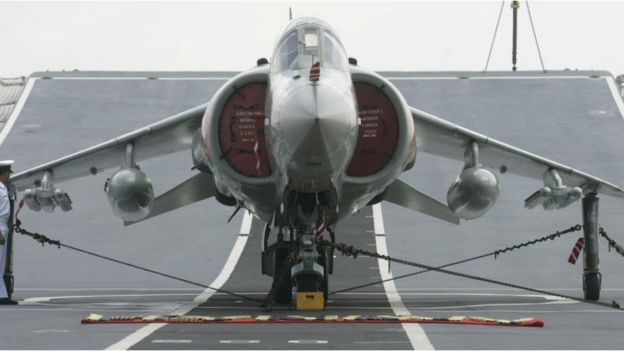India has military options against China: General Bipin Rawat
6 min read
A 31-word comment made by India’s Chief of Defense Staff General Bipin Rawat on August 24 made it to the front page of most newspapers and led to a lot of discussion.
In this, he told the news agency ANI, “There is also a military option to deal with the encroachment of the Chinese army in Ladakh but it will be adopted only when negotiations at the military and diplomatic level fail.”
The veterans in the defense service hardly raised eyebrows at his statement.
Lieutenant General (Retd.) D.S., who was the Chief of the Northern Command of the Army. Hooda said, “Can the CDS say that there are no military options? I think they were just stating facts.”
Air Marshal Anil Khosla, who retired from the post of Deputy Chief of the Indian Air Force, says, “I did not find anything wrong in what the CDS said. It was a nappy statement and I think it came a little earlier.” was supposed.”

Before extracting the implications of General Rawat’s statement, we should also know about China.
China’s land border is 22,000 kilometers and the coastline is 18,000 kilometers long. Apart from this, it has also prepared its infrastructure in foreign countries, including its base in Djibouti.
In India, where the Ministry of Defense and Home Affairs are separately controlled by the Defense Forces, there is a Central Military Commission (CMC) in China. The CMC is said to be the principal organ of the army and the commander of its military forces and is headed by the chairman and vice chairman.
Chinese President Xi Jinping is the chairman of CMC.
The CMC controls every single military force in China. These include the People’s Liberation Army (PLA), PLA Navy (PLAN), PLA Air Force, (PLAAF) PLA Rocket Force (PLARF), PLA Strategic Support Force (PLASSF) and PLA Joint Logistic Support Force (PLAJLSAF).

Where every army has its own command in India. The Chinese Army has five geographically defined theater commands (TCs). These include Eastern TC, Southern TC, Western TC, Northern TC and Central TC.
In the white paper on security released in 2019, China’s Ministry of National Defense spoke about the changes since 2012. It was said in
‘The combined force has reduced its capacity from 300,000 personnel while the number of active personnel is 20 lakhs.
While the army was reduced in the army, the Air Force maintained its number of soldiers. At the same time, the number of jawans in the Navy and PLARF was increased. PLARF has a stock of China’s nuclear and conventional missiles and was also formerly known as the Second Artillery Force.
Since 2012, a considerable amount of money has been spent on the Chinese military. This money was spent on good salaries, training of the soldiers and creating a good working environment for them, buying new weapons, making new weapons, military reforms and harmonizing between various security forces.
However, many Indian defense experts are skeptical of these claims from China. Some experts believe that Chinese techniques are ‘unproven’ and their security forces lack ‘war experience’.
What does India’s ‘military option’ mean?

There is no doubt that the Indian Army sees itself engaged in a defensive war on the 3,488 km long Line of Actual Control (LAC) with China.
It simply means that this fight is to kill the enemy coming from the front.
General Hooda says, “Our military strategy on China is completely different from Pakistan. We are aggressive about Pakistan, we threaten them in different areas but in case of threatening China, we adopt a defensive strategy and we are going to war We do not even imagine doing it. It does not mean that we cannot go beyond LAC and attack. If needed, we should do it. India has formed Mountain Strike Corps for this purpose. “
In response to the Chinese incursion, can India adopt a ‘tit for tat’ strategy and seize some of its land and bargain?
On this question, Lieutenant General Hooda says, “Such options might have been adopted earlier. For example, the option of haggling by adopting a titular strategy may seem quite provocative, but I think we are in a good position to answer them.” We have military capability. “
I asked if the geographical location of Ladakh gives India an edge?
On this question, Lieutenant General Hooda says, “The area of East Ladakh is flat and quite high. It is not hilly like LOC. Road network is also good, most of the posts can be transported by car and there is a challenge for us. No. But it would be wrong to say that the geographical location of Ladakh is in India’s favor. China’s basic structure is much better and it gives them an edge. “
How strong is the Indian Navy-Air Force

What will happen if the situation with China worsens in the maritime sector? On this, a former chief of the Navy told that in that condition India will go to the area where it is in a strong position i.e. in the Indian Ocean.
He says, “If anyone says that the Navy will be sent to attack China in the South China Sea, then I would be surprised. We can only lead China in the Indian Ocean because we know this area and the most important The thing is that we will have more accessories available here.
Many analysts believe that the use of the Indian Air Force will be the best if India moves towards the military option.
It is estimated that Indian ships will have more oil and weapons due to flying at a lower altitude from the air base. At the same time, the Chinese Air Force will fly from the Tibetan plateau and other high places where the very fine air flows, due to which they will spend more oil on keeping weapons.
But that’s not all.
Air Marshal (retd) Khosla, who heads the Eastern Air Command, says, “It has been believed that we have the edge of T3 – meaning technology, terrain (geography) and training. Technically they are ahead but the claims and real There is doubt in capacity. We have the edge of geography and training but they are looking at these issues and solving them systematically. To reduce the difference, we need to increase our capacity qualitatively and numerically. “
He told me how fast PLAAF has developed itself in recent years.
Air Marshal (retd) Khosla said, “The Chinese Air Force has been a part of the PLA. It is well built like any army which has all the necessities needed. After the economic emergence of China after the Gulf War. During this, he started modernizing his Navy and Air Force rapidly. Today his Air Force is rapidly increasing its capabilities. “
Where does india need to accelerate

Khosla says that China’s ‘biggest advantage’ over India is its ‘indigenous defense manufacturing base’.
Due to the manufacturing base, the supply of arms can be done in the country itself while India is working in this direction and in the coming future it will have to depend on imported weapons.
Apart from this, when it comes to cyber and space capabilities, China also has an edge over India.
Lt. Gen. Satish Dua, who retired as Chief of Integrated Defense Staff, says, “China has mastered building a cyber army and has capabilities in the area we are looking to reach. Our military forces need to be given the best talent We have to attract. There are talent in our country but they are working with someone else instead of working with us. “
China’s white paper also referred to ‘military reform’. General Dua shares his experiences of military reform in India.
He says, “India currently has a cyber, space agency and a special forces division. We want this command to be strong and equipped. Even in 2013 we got permission to activate these special forces, but we Was able to activate at the end of 2018. It was very weak work. Improvements should be made to speed up the implementation of such schemes. We should stop working in the cellars. The methods of war are constantly changing, so who Wanting to follow the old lines, they need to be replaced. “



